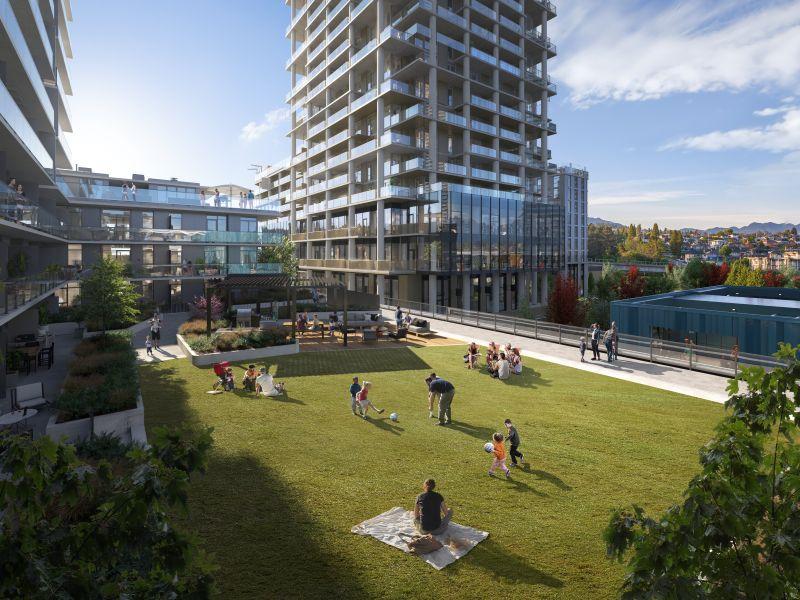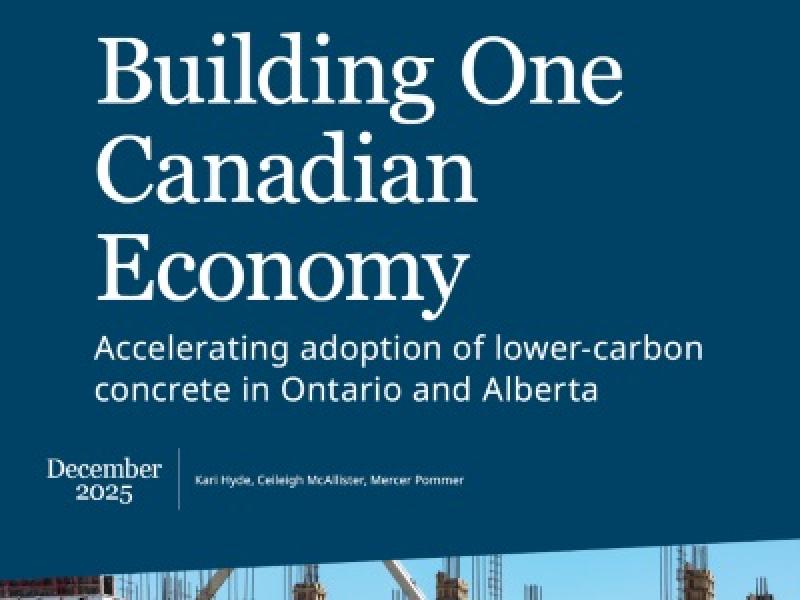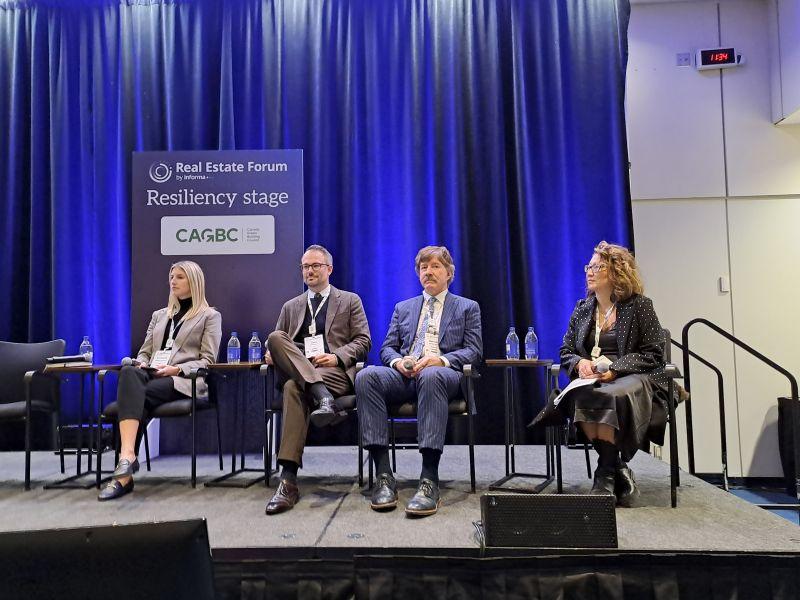
Projects such as Brentwood Block in Burnaby, B.C. are front and centre in Grosvenor Group’s efforts to reduce the carbon emissions from its North American real estate portfolio, as highlighted in its first sustainability report.
The London, U.K.-based company owns, operates and develops real estate primarily in the U.K. and North America. Its Canadian portfolio totals approximately 1.5 million square feet, focused mostly on British Columbia properties such as the Annacis Business Park, the 39-storey The Pacific, Grosvenor Ambleside and Mayfair West.
As outlined in its 2024/25 sustainability report, Grosvenor's goal is to keep its carbon emissions in line with the Paris Agreement’s aim of holding global warming to 1.5 Celsius by 2050. The goal for Grosvenor Property Americas, under which its Canadian portfolio falls, is to reduce carbon emissions by 42 per cent by 2030 and 90 per cent by 2050, against a 2021 baseline.
Grosvenor's North American operations "contributed strongly to the global average," the company said in a release, with a 42 per cent reduction in property emissions since 2021.
As a company that has been operating for almost 350 years, Grosvenor maintains a long-term perspective and tries to improve its communities, Tanja Milosevic, associate vice-president of sustainability for Grosvenor in North America, said in an interview with Sustainable Biz Canada.
“An important part of that is mitigating climate change and improving climate resilience as well.”
Grosvenor's green initiatives
To achieve its climate targets, Grosvenor is designing energy-efficient, sustainable buildings for its developments, procuring renewable energy, and working with local governments to streamline and improve regulations for its sustainability efforts.
Brentwood Block, an community planned to include over 1,700 residential units and 160,000 square feet of retail and commercial space, embodies some of this strategy. It is designed to have fully electric residential units which feature electric heating equipment as opposed to natural gas-powered heating.
Grosvenor is moving forward with this option despite Burnaby’s regulations that allow for natural gas heating, plus potential buyer and renter preference for gas, Milosevic said.
Mindful of the embodied carbon, Grosvenor implemented efficient design principles to reduce the concrete and steel used for Brentwood Block. Also, emissions reduction targets were established for the life cycle of the development.
Grosvenor plans to assess the possibility of installing on-site renewable energy capacity at Brentwood Block and is searching for ways to fully electrify the whole project, rather than just the residential units, Milosevic said.
Brentwood Block is expected to be finished in stages during 2029 and 2030.
'All rowing in that same direction'
To power its buildings with low-carbon electricity, Grosvenor procured renewable energy for some sites. One example is the Orchard Trimble office campus in San Jose, Calif. There, Grosvenor installed a solar panel array which is expected to offset the energy use of two of the buildings by 91 per cent, and by 55 per cent at the third.
Grosvenor Property Americas made “very good” progress on attaining its 2030 target, Milosevic said. The company is working toward its goals with portfolio changes, procuring renewable energy, efficiency initiatives, and acquiring the most up-to-date data, she explained.
While Grosvenor’s North American operations make up a much smaller portion of its total portfolio compared to the U.K., “we’re all rowing in that same direction,” Milosevic said.
In a sign of the success of its sustainability efforts, Grosvenor reported the carbon emissions from its property business decreased by 31 per cent from 2021 to 2024 – falling from 75,800 tonnes of carbon dioxide equivalent to 52,300 tonnes of carbon dioxide equivalent.
Getting better data

While Grosvenor addressed its direct property activities, the category represented one third of its total emissions in 2024. The company is contending with its supply chain emissions and efforts to collect the most accurate data to inform its planning.
To acquire accurate tenant energy data, “which is a constant struggle” according to Milosevic, Grosvenor overhauled its green lease clauses and engaged with its tenants in 2024. It started at one per cent data coverage in 2021, and has increased it to 33 per cent as of 2024, she explained.
In 2025, Grosvenor initiated a pilot to engage its key suppliers, especially on active construction sites, to acquire clearer carbon emissions data. It enabled the company to rely less on estimates, Milosevic said.
Grosvenor is integrating carbon and climate risk into its decision-making to “better understand how climate change could impact our portfolio, enabling us to ensure our long-term commercial performance and resilience,” the sustainability report states.
Diverting what needs to be diverted
In a preview of its upcoming sustainability efforts, Grosvenor aims to cover not just the construction suppliers in its data collection, but its assets and sources of financing such as banks.
Facing electricity capacity issues, challenging Grosvenor’s ability to electrify its buildings, the company plans to install more on-site renewables or procure off-site power to relieve pressure on grids, Milosevic said.
Currently, Grosvenor is facing such a limit for an asset in Vancouver Island it looks to electrify. In response, it is working with local utility BC Hydro to bridge the gap.
The company will be assessing which Canadian buildings it can transition away from using natural gas in 2026.
Constrained access to capital for sustainable developments remains a challenge for the real estate industry, a problem Milosevic referenced in a previous interview with Sustainable Biz Canada in 2024. But Grosvenor is finding trade-offs to incorporate sustainability, she said.
For instance, Grosvenor Property Americas was “very hands-on” with its suppliers to analyze the potential impacts of rising tariffs between Canada and the U.S. The firm considered adjustments to its supply chain, and its capital team “diverted what needed to be diverted” to minimize changes to its projects, she explained.










